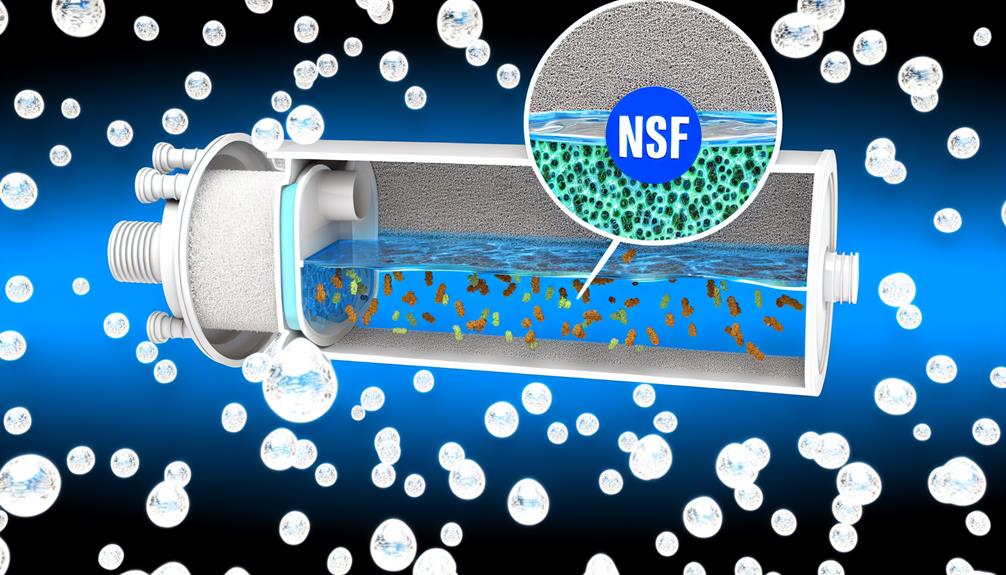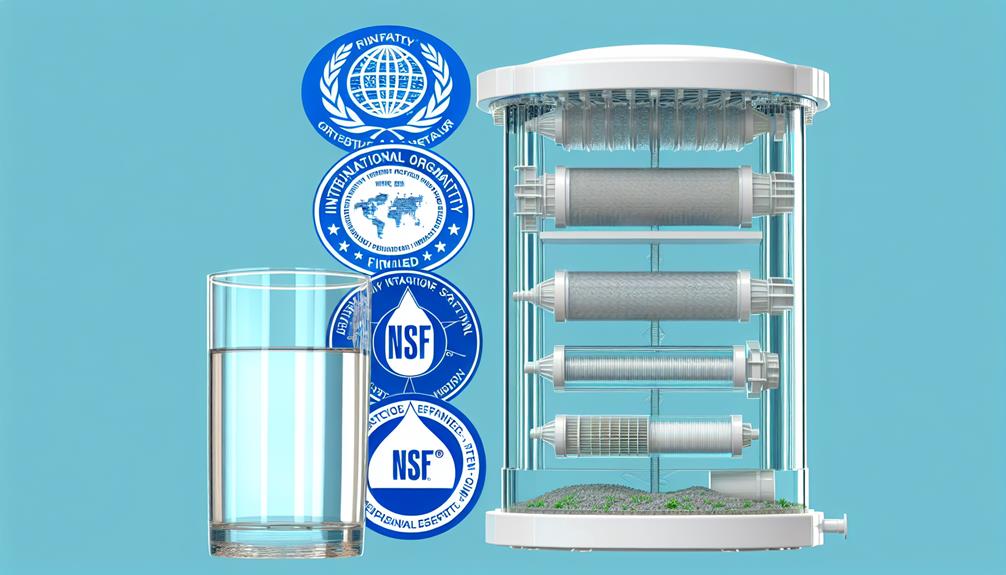Imagine you're at the starting line of a marathon, poised to navigate a course that's as rigorous as it is rewarding. This is akin to the journey you undertake when striving to meet ISO standards for water filter compliance.
As a manufacturer, you're tasked with not only ensuring that your water filters perform to a set of globally recognized benchmarks, but also with proving that your products are worthy of consumer trust. Achieving these standards, such as NSF/ANSI 42, 53, 55, and 58, means your filters have been tested and verified to reduce a spectrum of contaminants, thereby safeguarding the health of users.
However, the nuances of attaining and maintaining this compliance are manifold, and the path ahead is fraught with both technical challenges and the potential for significant market advantages. Stick with us, and we'll explore the intricate map that leads to the finish line of ISO standard compliance, where the prize is a stamp of excellence that reverberates through consumer confidence and industry respect.
Understanding ISO Water Standards
When selecting a water filter, it's crucial to comprehend the relevant ISO water standards, which provide precise benchmarks for evaluating a system's performance. These standards ensure your water filtration unit meets the necessary compliance for safety and efficacy.
Particularly, NSF/ANSI 42 and NSF/ANSI 53 set the criteria for reducing aesthetic contaminants like chlorine, taste, and odor through adsorption or filtration processes, such as those utilizing carbon filters. These certifications indicate point-of-use or point-of-entry systems' performance against specified impurities.
Moreover, NSF/ANSI 44 specifies requirements for water softeners that use cation exchange resin, highlighting their effectiveness in hardness reduction by substituting calcium and magnesium ions with sodium or potassium ions.
Meanwhile, NSF/ANSI 55 delineates the use of ultraviolet light for inactivating harmful microorganisms, with Class A systems being suitable for treating contaminated water and Class B systems aimed at already disinfected drinking water.
For a system that employs reverse osmosis, NSF/ANSI 58 is essential, addressing the reduction of Health Canada and EPA regulated contaminants through a semi-permeable membrane and additional filters.
Adherence to these standards, through rigorous testing and certification, confirms the filtration system's capability to perform as expected and ensures your water is free from harmful contaminants.
ISO Certification Process
Understanding the significance of NSF/ANSI certifications for water filters, you'll now need to familiarize yourself with the ISO certification process, which meticulously verifies that a product meets international standards for quality and safety. To begin, you submit a formal application that demonstrates your product's adherence to specific compliance standards for drinking water treatment units.
The certification process then moves to a thorough review where your processes, documentation, and management systems are evaluated against the stringent criteria outlined by the ISO standards. Your organization must show evidence that your water filters are certified to reduce contaminants in accordance with NSF standards.
An on-site audit is often the next step, where an assessor critically examines your operations to ensure that what's documented is practiced and effective. This is a crucial phase in the testing and certification process, as it provides tangible proof of your commitment to standards compliance.
Once you've successfully navigated the audit, your organization is granted the right to use the ISO certification mark, signaling that your water filters are NSF certified. But the journey doesn't end there. Continuous improvement is vital, as is periodic reassessment, to maintain your NSF certification and uphold the confidence that customers place in your products.
Compliance Benefits for Consumers
As a consumer, you reap the rewards of compliance through the assurance that water filters meeting NSF/ANSI standards provide safer drinking water by effectively reducing harmful contaminants. When you choose products certified by NSF, you're selecting a drinking water system that has undergone rigorous testing conducted by a recognized institution. This not only validates the performance claims made by drinking water system manufacturers but also ensures that the filters hold up to the high quality and safety standards necessary for healthy water.
Certified filters have been analyzed meticulously, with NSF testing examining a wide array of potential contaminants. The certification process involves assessing the materials, design, and overall performance of the filter to guarantee that it functions as claimed. This detailed, analytical approach allows you to make an informed product comparison. You'll be equipped with precise information about the efficacy of each certified filter, enabling you to discern the best option for your specific needs.
In essence, certified filters provide you with peace of mind. You can trust that the water passing through your NSF Drinking Water certified system is of high quality, contributing to the health and well-being of yourself and your loved ones.
Monitoring and Maintaining Compliance
To ensure your water filter system continues to provide the highest standard of water purity, it's essential to regularly monitor and maintain compliance with NSF/ANSI standards. This involves stringent adherence to established minimum requirements for drinking water filtration, ensuring that Point of Use (POU) and Point of Entry (POE) systems are rigorously tested and certified. Your focus must be on verifying that your product consistently meets specific contaminant reduction claims.
You'll need to conduct routine testing according to precise testing standards, ensuring that each system's performance aligns with Certified Water safety benchmarks. An analytical approach to these inspections will confirm that your systems uphold the rigorous standards for drinking water established by NSF.
Maintain accurate and detailed records of all maintenance activities, testing results, and any system modifications. These records are critical for demonstrating ongoing compliance and facilitating any necessary adjustments in response to updated NSF/ANSI standards.
Develop a comprehensive compliance management program that encompasses regular training for personnel and systematic quality control measures. Staying informed and responsive to changes in NSF/ANSI standards isn't just about meeting regulatory demands—it's about guaranteeing the safety and satisfaction of end-users who trust in the purity of their drinking water.
Case Studies of ISO-Certified Filters
Several case studies highlight the effectiveness of ISO-certified filters, demonstrating their ability to meet stringent international standards for water purification. For instance, a solid carbon block filter, certified for both aesthetic and health-related contaminant reduction, showcases exceptional results:
- Solid Carbon Block Filter
- *Certification of POU*: Achieved NSF/ANSI Standards 42 and 53, confirming its efficacy in reducing chlorine taste, odor, and health-related contaminants.
- *Contaminant Reduction Performance*: Product test results indicated a significant decrease in pollutants, ensuring safer drinking water systems sold globally.
Another compelling example involves reverse osmosis systems, which undergo rigorous testing to comply with NSF/ANSI 58:
- Reverse Osmosis Systems
- *NSF DWTU Standard*: These systems meet the stringent requirements set by Health Canada and EPA for contaminant levels.
- *Filter System Reduces*: The semi-permeable membrane technology effectively diminishes a comprehensive range of contaminants, surpassing the baseline for water treatment products.
In both cases, NSF sets the standards, leading to a streamlined certification process that verifies the integrity and effectiveness of the filters.
The emotional resonance stems from the security and trust that these certified systems provide to you as a consumer, ensuring access to clean and safe drinking water.

